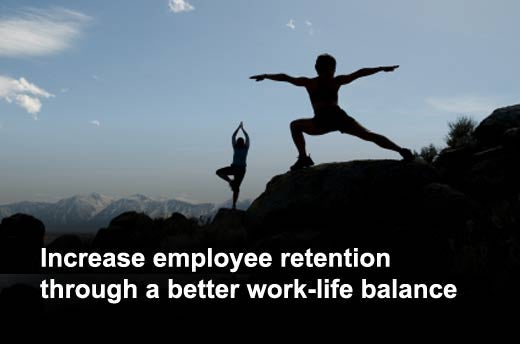According to Citrix, computing should make things possible — not impose constraints. Organizations should have the flexibility to place personnel wherever they’re needed, whenever the need arises, and not be bound by rigid IT infrastructures. Information and IT resources should flow easily to the workers and locations that can get them done most efficiently, rather than being locked in place due to concerns about security and manageability. People should be free to choose the ideal place and time and device to get their work done most effectively, instead of being forced to come to a specific location on a set schedule. Possibilities like these are the essence of workshifting — and they’re changing the way today’s organizations do business.
Simply put, workshifting is a strategy based on getting work done in the right place by the right people at the right time. This can take many forms — and deliver a wide range of business benefits. Business processes or entire departments can be moved to new locations to tap into a broader labor pool, including employees, contractors and outsourcing or offshoring providers, to improve productivity and customer service. Mergers, acquisitions and branch office expansion can be completed more quickly and seamlessly to support business growth. Operations can be moved from one location to another — or even to a different location for each worker — in the event of a disruption to ensure business continuity. Data and applications can be centralized and completely independent of an endpoint device to improve security and manageability. Teleworking and desk-sharing programs can reduce facility and real estate costs. A more flexible work experience can help the organization recruit and retain skilled employees, improve job satisfaction and reduce turnover costs.
Given benefits like these, the question becomes: Why haven’t we been workshifting all along? In the past, traditional IT computing infrastructure simply couldn’t provide the flexibility, security or manageability workshifting required. Then virtual computing changed everything. Workshifting is made possible through virtual computing, a model developed by Citrix® for centralizing IT resources and delivering them as a secure, high-definition service that enables users to work whenever, wherever on whatever device.
Click through for 10 reasons your organization should consider virtualization technology to improve workforce agility and business success, as identified by Citrix.
The ability to open new work locations or branch offices, or expand existing offices quickly and efficiently, can be a powerful source of competitive advantage. A traditional desktop infrastructure can rob organizations of the agility they need to grow easily, requiring new hardware to be purchased and software to be installed and configured on a worker-by worker basis. Concerns about overprovisioning can lead to conservative decision-making about the number of desktops to be provisioned, and requirements must be forecasted well in advance due to protracted implementation schedules, slowing growth and reducing flexibility.
A virtual computing infrastructure enables the enterprise to bring new locations online in a single day or less and provision desktops to new users in a matter of minutes. Any available desktop hardware can be used to access a virtual desktop on demand — including aging legacy equipment and users’ own devices — while ensuring that every worker benefits from a high-definition user experience even for the most demanding enterprise applications. Centralized management and online support tools eliminate the need for IT personnel to be deployed to new locations, reducing overhead. As a result, the organization can grow easily, rapidly and elastically while speeding business impact.
A merger or acquisition is only the beginning of a long and complex process to integrate new locations and workers into the organization. As the new enterprise works to unify its business operations, it must also make a common foundation of IT resources, including both data and applications, available to its combined workforce. When the infrastructures of the combined organizations differ significantly — as is often the case — this can involve months or years of effort and high integration costs.
Virtual computing provides a way to integrate organizations far more quickly, easily and cost-efficiently. Workers throughout the enterprise can be provided with virtual desktops almost instantly while using their existing computing devices to gain access to common data and applications. By fundamentally reducing integration timelines — making it possible to bring new acquisitions online in as little as a single day, not months or longer — workshifting enables companies to improve their time-to-value for acquisitions, support a more aggressive growth strategy and take advantage of emerging strategic opportunities with greater confidence.
Work, personal business and family life rarely remain within separate, clearly defined times of day. Sometimes it’s a matter of waiting at home for the cable guy, or in a doctor’s office with an ill child, or being stranded by a blizzard and unable to return to work at the end of a vacation. Conversely, work often spills beyond business hours, or calls during nontraditional hours such as the weekend. If workers are unable to adapt to these scenarios and get their work done in a convenient way, both their productivity and their job satisfaction suffer — and they may be tempted to look elsewhere. This can lead to high costs for the business: According to the Turnover Cost Calculator from the Corporate Leadership Council (CLC), mid-size organizations easily spend millions of dollars per year replacing departing employees with new recruits, including costs of the original employee’s departure, recruiting and training their replacement, and the lost productivity and continuity caused by the changeover.
Workshifting gives workers the flexibility to balance work and home however best fits their schedule and the respective needs of each. According to WorldatWork, the higher an organization rates itself on the flexibility scale, the lower the organization’s voluntary turnover rate. An employee who needs to stay home to meet a service provider can simply work there for the day, just as productively as they would at the office — if not more so. An unexpected snow day or ill child doesn’t mean the worker has to be absent as well. At the same time, when work needs to be done after hours or on weekends, an employee can deal with it from the comfort of their own home or wherever they are, then resume their personal time without the disruption of a trip back to the office.
Organizations seeking to hire skilled workers have always faced tough competition — and this will only increase as the economy recovers, baby boomers retire and generational change brings large numbers of highly desirable technology-savvy workers into the labor force. Workshifting both expands recruitment beyond its traditional geographical constraints, and helps companies compete more effectively for in-demand candidates, consultants and contractors by offering a more appealing work experience.
When work becomes fully mobile and location-independent, hiring need no longer depend on where a candidate, consultant or contractor currently lives, or on their willingness to relocate. If the best candidate lives in another state, overseas, no problem; they can still be integrated easily into the company’s operations and participate fully in its business.
Multi-geographic work teams play a vital role in many organizations, whether composed of colleagues and managers from different locations, customers at their own sites, partners from different companies or a dynamic blend of all of these. In the past, these teams have collaborated through a combination of conference calls and in-person meetings that are both costly and disruptive, forcing more distant team members to spend much longer in transit than in actual discussion, or to forgo the meeting entirely.
Virtual computing provides a complete framework for highly effective collaboration over distance. Centrally stored and managed data can be made available across the team, ensuring that each member is working from the same, consistent set of up-to-date information to make decisions, communicate with customers and develop projects. A virtual desktop ensures that each team member is using the same versions of software applications, even if their offices or organizations are on a different update schedule.
Real estate costs represent the second-biggest budget item for most if not all companies. Workshifting can reduce this expense significantly by making it possible for workers to be equally productive inside or outside the office, enabling a wide range of workplace models with even greater flexibility than traditional teleworking programs.
One model, known as desk-sharing, hot-desking or hoteling, consists of providing space for only a fraction of a company’s total workforce. Instead of being assigned to a permanent desk, workers book space on an as-needed basis only for the days they will actually be in the office —eliminating the common scenario of an office belonging to a road warrior or teleworker which stands empty most of the time. Meanwhile, teleworkers who usually work remotely can be accommodated easily when they come in to the office, rather than feeling like an intruder for using the personal space of an absent worker.
The ability to deploy personnel and processes more flexibly can be a powerful driver of competitive advantage. Companies in industries such as mining and construction can support worksites more effectively and achieve greater oversight and control. Multinational organizations can locate workers in the regions where they do business, minimizing the need for long-distance travel to meet with prospects, customers and partners. At times of peak demand, companies can share work efficiently across additional workers in multiple locations no matter where they’re found — on another floor, across the country or at an outsourcing facility. A global strategy where “work follows the clock” through offshoring can enable true 24×7 productivity. Lower-value tasks can be shifted from highly skilled workers to lower-cost labor to reduce costs and improve efficiency.
Workshifting gives enterprises optimal flexibility to deploy and equip personnel according to the needs of their customers, rather than forcing customers to adapt to the constraints of the organization. A dedicated employee can be placed on-site with an important customer to offer more choice and respond more quickly and accurately to requests, helping build stronger customer relationships and avoid lost sales. Sales reps can process orders directly from a trade show floor to accelerate fulfillment and revenue.
In a call center context, workshifting helps organizations maintain both high worker productivity and responsiveness even as call volume rises and falls over the course of a day. An eight-hour shift can be split into two four-hour shifts performed at home, one in the morning and one in the evening, to support peak call hours while freeing the worker to attend to personal or family business during the middle of the day. Part-time shifts become more attractive to workers who are given the freedom to perform them at home, rather than having to spend time commuting for only a few hours of work.
As user environments become more complex, with a greater variety of devices, access methods and user types (employee, partner, customer, consultant, contractor, temporary worker, offshoring or outsourcing worker), concerns about security become paramount. While this complexity is often a necessary part of increasing the organization’s flexibility, productivity and efficiency, it also poses new challenges for protecting intellectual property, maintaining data privacy and complying with IT security policies and government regulations.
Virtual computing infrastructure is more inherently secure in several ways. Desktop virtualization means that all data and applications remain centralized and under IT control; instead of data traveling from place to place, it remains in the datacenter, not on the user device. IT can easily prevent data from ever being saved to removable media, printed, or shared. If a user device is lost, no corporate assets are compromised; meanwhile, the worker can use any available device — smartphone, borrowed laptop, rented computer, or device from home — to access the same familiar virtual desktop, complete with the same data, apps and personalization. As a result, the organization can support a highly diverse environment of devices, access methods and user types—as well as allow workers to bring and use their own equipment for work — without sacrificing security.
Business continuity depends in part on ensuring that workers have uninterrupted access to the data and applications their productivity depends on. The same virtualized infrastructure that enables workshifting also provides a highly effective foundation for maintaining business continuity through disruptions of all kinds, planned and unplanned: routine system maintenance, power failures, broken water mains, seasonal flu outbreaks — as well as more serious situations such as natural disasters.













